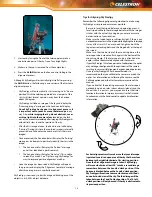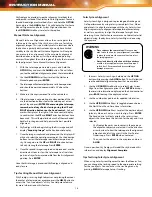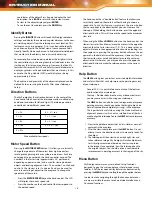
D
Declination (DEC)
E
Ecliptic
Equatorial mount
F
Focal length
G
GoTo
J
Jovian Planets
K
Kuiper Belt
L
Light-Year (ly)
M
Magnitude
Meridian
Messier
N
Nebula
North Celestial Pole
Nova
O
Open Cluster
The angular distance of a celestial body north or south of the celestial equator. It may be said to correspond
to latitude on the surface of the Earth.
The projection of the Earth’s orbit on to the celestial sphere. It may also be defined as “the apparent yearly
path of the Sun against the stars”.
A telescope mounting using two independent rotation axes allowing movement of the instrument in
Altitude and Azimuth.
A telescope mounting in which the instrument is set upon an axis which is parallel to the axis of the Earth;
the angle of the axis must be equal to the observer’s latitude.
The distance between a lens (or mirror) and the point at which the image of an object at infinity is brought
to focus. The focal length divided by the aperture of the mirror or lens is termed the focal ratio.
Term used to refer to a computerized telescope or to the act of slewing (moving) a computerized telescope.
A unit of angular size equal to 1/60 of a degree.
Any of the four gas giant planets that are at a greater distance form the Sun than the terrestrial planets.
A region beyond the orbit of Neptune extending to about 1000 AU which is a source of many short period
comets.
A light-year is the distance light traverses in a vacuum in one year at the speed of 299,792 km/ sec. With
31,557,600 seconds in a year, the light-year equals a distance of 9.46 X 1012 km (5.87 X 1 trillion mi).
Magnitude is a measure of the brightness of a celestial body. The brightest stars are assigned magnitude
1 and those increasingly fainter from 2 down to magnitude 5. The faintest star that can be seen without a
telescope is about magnitude 6. Each magnitude step corresponds to a ratio of 2.5 in brightness. Thus a star of
magnitude 1 is 2.5 times brighter than a star of magnitude 2, and 100 times brighter than a magnitude 5 star. The
brightest star, Sirius, has an apparent magnitude of -1.6, the Full Moon is -12.7, and the Sun’s brightness,
expressed on a magnitude scale, is -26.78. The zero point of the apparent magnitude scale is arbitrary.
A reference line in the sky that starts at the North Celestial Pole and ends at the South Celestial Pole and
passes through the zenith. If you are facing south, the meridian starts from your southern horizon and
passes directly overhead to the North Celestial Pole.
A French astronomer in the late 1700’s who was primarily looking for comets. Comets are hazy diffuse
objects and so Messier cataloged objects that were not comets to help his search. This catalog became the
Messier Catalog, M1 through M110.
Interstellar cloud of gas and dust. Also refers to any celestial object that has a cloudy appearance.
The point in the northern hemisphere around which all the stars appear to rotate. This is caused by the fact
that the Earth is rotating on an axis that passes through the North and South Celestial Poles. The star Polaris
lies less than a degree from this point and is therefore referred to as the “Pole Star”.
Although Latin for “new” it denotes a star that suddenly becomes explosively bright at the end of its life
cycle.
One of the groupings of stars that are concentrated along the plane of the Milky Way. Most have an asymmetrical
appearance and are loosely assembled. They contain from a dozen to many hundreds of stars.
27




















